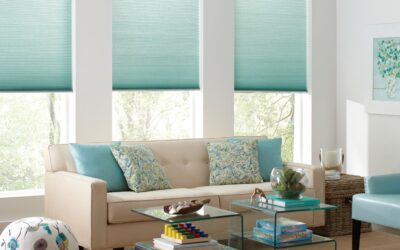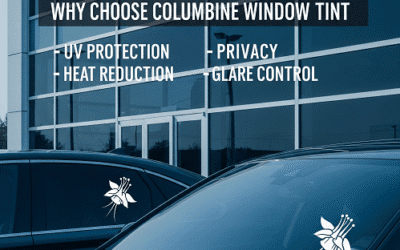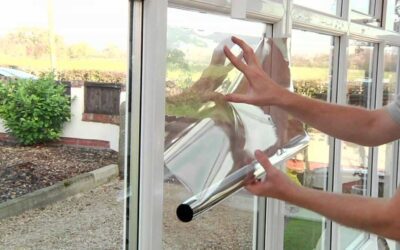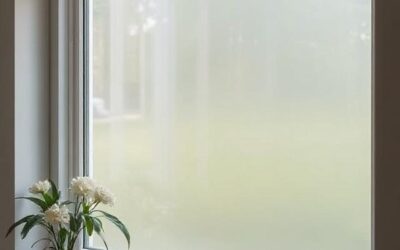What is the Average Cost of Office Window Tinting in the US?
There are many types of window films, including commercial or office window tinting, residential or home window tinting, and automotive window tinting. In this article, we will focus on the average price for commercial and residential window tints and leave the differences and costs of automotive window film for another discussion.
When discussing the average price for window tint for commercial and residential applications, consider a few things. First, whether your application is commercial or residential, while the films may be the same, the jobs can differ significantly. Second, what type of window film you are using can substantially determine how much your job will cost. Next, you need to consider the size of the window film job, along with the number of windows and each window size. Are there any additional circumstances that could add to the difficulty of installing window film on your home or building, including the need for ladders or lifts? Finally, where is your window tint job located to the window tint company you go with, and where in the country? We will briefly go over each of these to give an idea of the average tint cost you might expect for your windows.

Read More: Types of Custom Tinting at Home and Commercial Locations
Commercial or Residential Window Tint
While the window films used for office window tinting and home tinting are often the same, the applications can be very different, affecting the average costs. Windows on homes are usually much smaller than in offices. Often, commercial jobs have the potential to be larger and have many windows that are the same size. Pricing window film by the square foot is the most common starting place. Both your home and business may have ten windows for window film, but those same ten windows may total 200 SqFt at an office, and the ten on your home only add up to 40 SqFt. In this instance, you may pay a lower average tint cost on your home for the material but a higher price for the labor. Also, with many different size windows, your installation will require more work to prepare the film at those different sizes. These are just a couple of examples of why the average window tint price may differ for residential and commercial tinting.
What type of window film are you using?
The type of window film you are using on your home or business can also influence tint cost variations. Some manufacturers charge more for their window films which would affect the pricing to the consumer, but the most significant difference is not in the brand as much as the type of film. For example, security window tints often cost more than solar window tints. Also, there are custom-printed and patterned films that cost more than the average solar film. Gradient films, where a frost or pattern slowly fades to clear, are often double or triple the cost of solar films. Spectrally selective solar films, very light films that still block lots of heat, will also add to the cost of office window tinting.
There are also specialty window films that can significantly differ in cost compared to classic films. We aren’t even going to include these in an average tint cost estimation, as they can be expensive enough to be a complete outlier. If you need one of these products, don’t look at the average cost; get a quote for your application. Examples of these films could be cloaking films, used to hide sensitive information on computer screens from prying eyes, or switchable films, frost films that change to clear with the flick of a switch.
The average cost of window tinting depends on the following factors:
1. Size, Number of Windows, and Window Size
As with many transactions, an economy of scale can come into play, producing differences in the average price for window tint. If your office window tinting job has 100 windows and your home needs film on only one window, you will pay a higher rate for the one window. Sometimes customers will ask for a per-window quote for window film. Per-window pricing can be complex, considering that a huge window will cost more than a tiny one, even though you may receive a better square footage rate for the large one. French panes, windows with many small panes, can significantly add to the per-window cost of your window film.
2. Extra Cost Of Adding Items
Many window films will start with a per-square-foot price for your chosen window film and then add cost for items from there. Many things could add to the average tint cost, including removal, off-hour application requirements, and windows that are difficult to reach. Some office window tinting applications have very high windows that would require a lift to get to, and some you may be able to use a scaffold or ladder. A lift will add much to the base cost, while a ladder will only add a little.
3. Location
Location can affect the average price for window tint in a couple of ways. First, where in the country are you located? If the cost of living is higher than average in an area, so is every other expense, including window tint. Just as there are more expensive places to live, like California, and less costly, maybe Wyoming, everything else in these locations would be priced higher or lower in the same way.
For commercial tinting or window film for your home, the distance your project is from the window film company can play a part. If you are far away from your window film provider, you will have to pay more for that film, as the company will have to pay their employees more for the time to get to you. Pricing for distance will be valid with any business, anywhere, but is familiar with rural or mountain areas where the closest window tint shop may be many miles away.
Conclusion
You can see why giving an average price for window tint can be a tough thing to do. It would be best if you considered each of the items discussed above when considering an average tint cost for you. Whether you need office window tinting on many windows or only a few windows tinted at home, you can use these guidelines within an average price range. Most commercial and residential window film applications range from $6 to $15 per square foot. Look at the paragraphs above to see what items you have that may affect your application within that range or if your job is entirely outside the range.
Follow Columbine Window Tint to stay updated.










